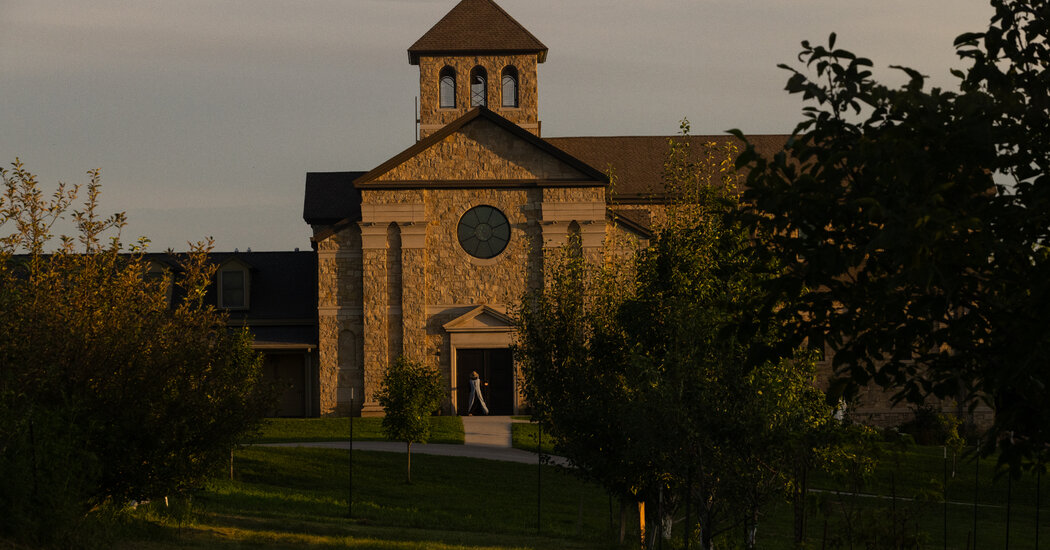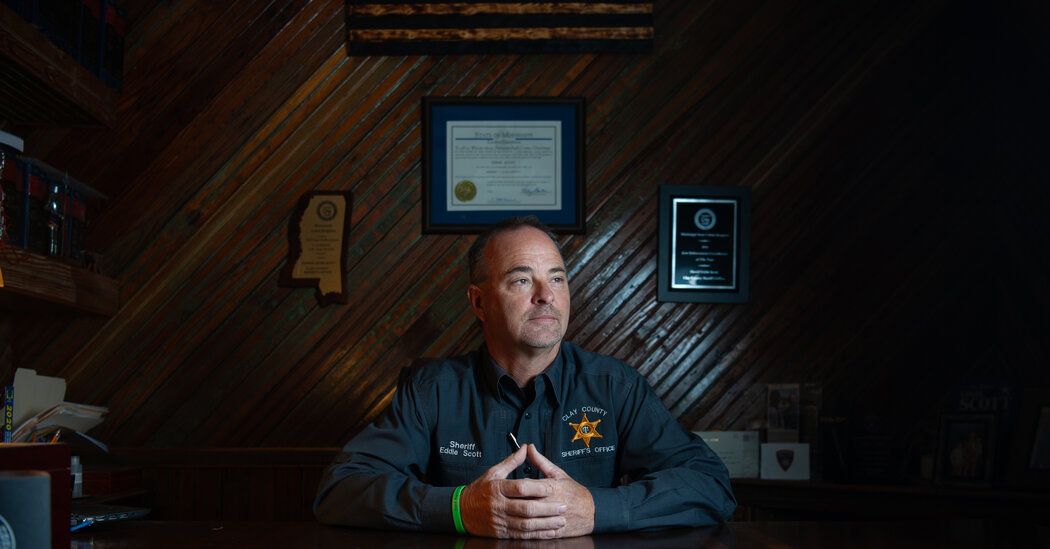In and Out of the Courtroom, O’Connor Inspired a Generation of Women
When Laney Serface was a young girl growing up in Northern California, she pinned a news article about Sandra Day O’Connor among the ephemera of theater tickets and photographs on her bulletin board.
“She sat in one of the highest positions in our government, and that made me feel like I could, too,” said Ms. Serface, an actor in Los Angeles who has long seen Ms. O’Connor, the first woman to serve as a justice on the U.S. Supreme Court, as an inspiration.
Rhesa Rubin, a lawyer in Tucson, Ariz., met Justice O’Connor in the 1990s and has kept a framed, inscribed snapshot of their meeting since then. “I’ve had the picture in every office that I have worked in,” she said, adding that sometimes she vented to the portrait about the challenges of the legal profession.
RonNell Andersen Jones, who served as one of Justice O’Connor’s clerks, recalled her boss’s stories of entrenched sexism, of graduating near the top of her law school class at Stanford University and still being offered only a secretarial position at a law firm.
“It was a real gift to me to be able to learn from her, and to see the barriers that she had broken and the ways I was a beneficiary of it,” said Ms. Andersen Jones, who is now a law professor.
The death of Justice O’Connor on Friday stirred a cascade of reflections across the country. Elected officials from all levels of government lauded her intelligence and influence. Former clerks recalled her mentorship and guidance. Analysts considered her judicial legacy as a moderate Republican whose decisions often supported women’s rights.
Ms. O’Connor was a powerful justice who sat in the middle of the court’s ideological spectrum. But she made a series of influential rulings on matters, including abortion, sexual harassment and sex discrimination, that were crucially important to women.
She once called abortion “repugnant” and criticized Roe v. Wade, but then later upheld the core of the 1973 ruling; she also penned decisions strengthening the effect of Title IX and holding school districts liable for ignoring sexual harassment.
Outside the legal community, many Americans remembered her simply as an extraordinarily powerful, respected figure who had shattered one of the biggest glass ceilings.
“Just to see somebody in her position was absolutely inspiring,” said Lynette Westendorf, 72, a composer and musician from Wenatchee, Wash.
Ms. Westendorf watched Justice O’Connor during oral arguments in a case before the Supreme Court in 2001, and recalled little about the other members of the court. But Ms. O’Connor was electrifying, she said.
“She just cut right to the chase with the most cutting, relevant questions,” she said. “She was so confident and eloquent.”
To many women, Justice O’Connor’s stature was a source of admiration and relief, a rare female figure in a commanding position in American life.
On her way to becoming a clinical psychologist, Molly Witten had gritted her teeth through the questions that only women in her profession seemed to get: whether she would be uncomfortable giving certain exams to a man, or whether she should prioritize attaching “Mrs.” rather than “Ph.D.” to her name.
“I had no role models, and then comes this woman, Sandra Day O’Connor, who says, ‘I can make decisions and I can think independently,’” Ms. Witten, now 75 and living in Chicago, recalled in an interview. “And from that day on, I was a fan of Sandra Day O’Connor.”
“She said the things I felt,” Ms. Witten added, “and men listened to her.”
Justice O’Connor was nominated to the Supreme Court in 1981 by President Ronald Reagan, and in 2005 announced that she would resign to spend time with her ailing husband — a decision that many women found moving and, in its own way, relatable.
“She embodies the complication of being a wife and a mother and a professional,” said Cathleen McLaughlin, a New York lawyer who headed to law school shortly after Justice O’Connor was nominated to the court and saw her as one of just a few role models at the time.
Justice O’Connor set the tone in her chambers by hiring a large number of female clerks, setting herself apart from the other justices. And while she was demanding — accepting no excuses for mistakes, a lesson she drew from growing up on a ranch in the West — she also took an interest in her clerks and their personal lives.
“She would give them career advice, she would give them jobs,” said the historian Evan Thomas, who interviewed 94 former O’Connor clerks for his biography of the justice, “First.”
“She told them to get out and get exercise, always take care of your family, give good dinner parties, never be too busy to take care of people,” he said. “You had to have a life.”
For the women who clerked under Justice O’Connor, there was a keen awareness of both the barriers she had broken and her desire to be viewed outside of that history. Some recounted her wish to have her headstone reflect only that she had been a good judge, her relief when Justice Ruth Bader Ginsburg became a second woman to sit on the court and her insistence that her gender did not shape her decisions.
“If you look at her jurisprudence on sex discrimination, it’s clear that she is bringing a perspective that can be shared by people who aren’t women, but that would have been shaped by the fact that she was a woman — and the same is probably true of her abortion jurisprudence,” said Cristina Rodríguez, a former clerk and now a Yale Law School professor.
Justice O’Connor also got to know the women who would follow her to Washington, including at annual dinners with women in the Senate and on the Supreme Court.
In her cases involving sexual harassment and discrimination, Justice O’Connor most often undertook a careful legal analysis that avoided political posturing and insisted on an exacting interpretation of the law.
In 1999, she wrote, in a majority opinion, that students who are sexually harassed by peers in public schools might be able to sue the school for failing to stop the harassment. That case, known as Davis v. Monroe County Board of Education, rose from a fifth-grade girl in Georgia who was the victim of repeated sexual harassment by a boy at her school. Despite reports to multiple teachers over several months, the boy was not punished.
Justice O’Connor wrote in that 5-to-4 decision that the girl’s mother was seeking to hold the school board accountable “for its own decision to remain idle in the face of known student-on-student harassment in its schools.”
Years later, in an important case interpreting Title IX, the federal civil rights amendments that prohibit sex-based discrimination in education programs that receive federal funding, Justice O’Connor wrote in 2005 that the law prohibited school officials from retaliating against people who made accusations of sex discrimination.
The case concerned the male coach of a girls’ high school basketball team in Birmingham, Ala., who had complained that the team was not getting equal funding and was subsequently removed from his coaching position. Justice O’Connor wrote for the court that he had the right to pursue a case against the school district and argue that his removal was retaliation for making a complaint about sex discrimination.
And in a case that would later have important implications for women’s admissions to all-male schools, Justice O’Connor wrote for the majority in 1982 that a state-supported women’s nursing school could not deny a man admission solely because of his sex. “Rather than compensate for discriminatory barriers faced by women,” Justice O’Connor wrote, the Mississippi school’s “policy of excluding males from admission to the School of Nursing tends to perpetuate the stereotyped view of nursing as an exclusively woman’s job.”
In her last years, Justice O’Connor, who suffered from dementia, had retreated from public view in Arizona.
Chancellor Kent Syverud of Syracuse University, who clerked for Justice O’Connor from 1984 to 1985, remained close with the justice over the decades and last visited her in August.
She was cradling a pillow bearing the name of her alma mater, he said in an interview on Friday — “in love with Stanford right till the end” — and was receiving excellent care in the final days of her life.
Mr. Syverud reflected on what he called her legacy of moderation and respect for differences, and her conviction on the issue of equal rights for women.
“She felt an obligation to make sure there were others after her,” he said. “She felt the obligation of being first heavier than anything I’d ever seen.”
Kirsten Noyes contributed research.


